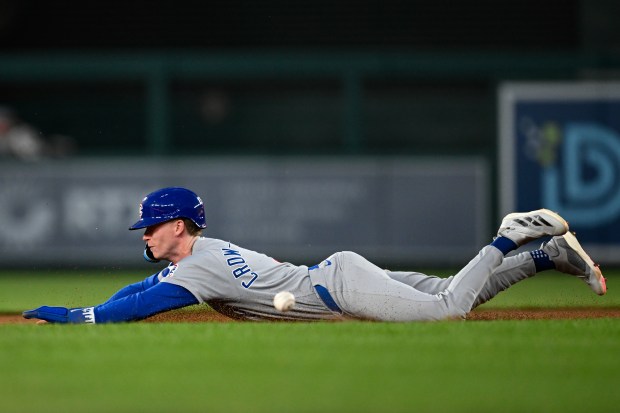PHILADELPHIA — A great baserunning team is more than the speed of its players.
That certainly helps, as the Chicago Cubs have witnessed with Pete Crow-Armstrong, whose 21 stolen bases are tied for the second-most in the majors. But the Cubs have preached how elite baserunning goes beyond pure speed, it’s a mentality the team has adopted and seen pay off numerous times through their first 65 games. Whether it’s taking an extra base or a great secondary lead and hustle to beat a force out, the Cubs find ways to put pressure on opposing defenses.
When evaluating the Cubs’ baserunning, there is one element manager Craig Counsell looks at closely: team-wide engagement. It’s been emphasized since the start of spring training and remains a constant focus.
“Most of the great baserunning plays involve some kind of risk, right?” Counsell said Monday. “I keep saying that, but risk is involved, it’s not going to be 100%, so you have to accept that. But we try to preach the engagement in it and the attention to it and then feel, with the skill of our players, that we will over the long haul make a really positive impact.”
The Cubs entered Monday’s series opener against the Philadelphia Phillies leading MLB in run scoring percentage (36%), the rate at which a baserunner eventually scores, and second in stolen base percentage (85%) while the MLB average is 77%. Despite the risk that comes with an aggressive approach, the Cubs’ 18 outs on the bases — which doesn’t include pickoffs, caught stealing or force plays — rank 19th in the majors.
The group’s collective drive has impressed third base coach Quintin Berry the most through the first 2 1/2 months of the season.
“We’ve made an effort and a point, that attention to detail and look for the extra base and stay aware of the situation — and nobody’s really dialed back on that,” Berry told the Tribune. “We’ll continue to push all that. That’s a big piece because it’s easy to talk about that stuff during training and the first month of the season, but to still be in June and having the conversations and guys looking for certain things is huge.
“It’s what’s going to carry us when it comes to the playoffs and pushing into the late postseason.”
Before the first game of every series, the coaching staff has a meeting with hitters to go over the Cubs’ general baserunning plan versus the other team and then have conversations specifically centered on the opponent’s starting pitchers. The Cubs’ lineup features an ideal mix of personnel with the speed and quickness to be a threat to steal bases (Crow-Armstrong, Nico Hoerner, Matt Shaw and Kyle Tucker) and veterans who can find the right spots to go (Ian Happ, Dansby Swanson and Jon Berti).
The Cubs’ 82 steals put them third in MLB behind the Milwaukee Brewers (85) and Tampa Bay Rays (90). The next closest team had 63 steals through Sunday. Although Crow-Armstrong, Tucker (16) and Hoerner (13) sit in double digits, the Cubs are dangerous beyond that trio with six players tallying at least seven steals, the most in baseball. Only three teams feature five players with seven or more stolen bases. Crow-Armstrong’s six games with multiple steals leads the big leagues.
The Cubs sit in first place in the National League Central in large part because of the little things they do well, including their baserunning. Expect it to remain part of their identity, even when they endure games where the matchups might not be ideal to run.
“You can’t control some of that, that part of it you have to be willing to wait for your opportunities, be patient for your opportunities,” Counsell said. “But if you’re engaged, you’ll capture those opportunities when they come, and I think that’s the key to this thing with baserunning.
“There’s days when you’re not going to steal a lot of bases, that’s not powered up. There’s days when you’re playing from behind, and some of the aggressive baserunning just gets a little harder to do, so it’s just part of it. You have to use the score as a guide in your baserunning.”




